Crew Sheets
A 'Crew' is a group of people who commonly work together. While individuals can be ADDED to a crew, ad-hoc gatherings of people are rarely able to function properly without some powerful motivators (such as an angry mob. Refer to "Crew Scaling" to see crew sizes and their modifiers. To be able to function as a Crew (IE: to use the Crew Sheet) then more than half of the crew must be working on the problem in some way. This might not be DIRECT involvement, a safecracker is acting alone but gains modifiers for the crew quietly handing him tools, helping him focus by providing lookout, holding a flashlight steady, etc.
The Crew gains experience separate from its members, but members can also 'donate' experience points to purchase techniques and even boost a score; a tug-of-war team might be stronger than another just by virtue of training together when the other team is made up of individual bodybuilders.
A 'Crew' is operating as a 'Crew' so long as a majority of its members are sacrificing at least one action (out of three per round) to collective action. An action can be donated this way simply to maintain cohesion, representing a Mental Action to keep tabs on the other members. This means that it's possible for the Crew to act and then each individual still has two actions per round unless the Crew decides to make an All Out Attack or similar full-round action.
Collective Attributes
When a crew acts together, they operate as a single unit with a collective attribute score instead of rolling separately. Attributes scale differently based on their nature:
ST (Strength) & IQ (Intelligence): Use the highest individual score and add (not multiply) a scaling bonus for additional members.
DX (Dexterity) & HT (Health): Use the average score of the crew, with failures affecting the lowest-scoring members first.
Collective action requires at least half the crew to participate, and uncooperative or impaired members reduce effectiveness.
Strength (ST) Scaling
Strength-based actions involve physical force, such as pushing, lifting, or breaking objects. The strongest crew member’s ST is used as the base score, and additional participants contribute a scaling bonus based on crew Size.
Example: A four-person Beta-Scale crew (x3 modifier) is trying to force open a jammed door. The strongest member has ST 14, and all four push together. Their collective ST is:
14 (base) + (3 + 3 + 3) = 23 ST
If only two additional members assisted, the effective ST would be 20 (14 +3 + 3) instead.
Dexterity (DX) Scaling
Dexterity-based actions involve coordination, balance, and fine motor skills. Since dexterity does not stack between individuals, the crew's DX is averaged across all members.
Failure Distribution: If the roll fails, effects (such as a fall) impact the lowest DX members first, scaling upwards.
Example: A four-person Beta-Scale crew is trying to move across unstable terrain. Their DX scores are 9, 10, 10, and 11. Their collective DX is (9+10+10+11) ÷ 4 = 10.
They roll against DX 10 to maintain balance.
If they roll 12 (failure by 2), the two lowest DX members (9 and one 10) suffer the consequences (e.g., slipping or slowing down).
Intelligence (IQ) Scaling
IQ-based actions involve problem-solving, analysis, and knowledge application. The highest IQ in the crew is used as the base, and additional members provide a scaling bonus to represent shared expertise and teamwork.
Example: A three-person Beta-Scale medical team (x3 modifier) is attempting to stabilize a patient. The smartest member has IQ 13. Since all three work together, they roll against:
13 (base) + (2 × 3) = IQ 19 for First Aid.
If only one assisted, the roll would be against IQ 16 instead.
The quality of teamwork also matters—if the driver provides a bumpy ride, the roll might take a penalty.
Health (HT) Scaling
Health-based actions involve endurance, resistance to harm, and overall resilience. Since a team’s durability is only as strong as its weakest members, the crew’s HT is averaged across all participants.
Failure Distribution: If the crew fails a HT roll (e.g., against exhaustion, poison, or tear gas), the lowest HT members suffer first, scaling upwards.
Example: A four-person crew exposed to tear gas has HT scores of 9, 10, 10, and 11. Their collective HT is (9+10+10+11) ÷ 4 = 10.
They roll against HT 10 to resist the effects.
If they roll 8 (failure by 2), the two lowest HT members (9 and one 10) are affected first, forcing them out of action while the others remain functional. This brings them to half strength, which means they are knocked to the lower Crew Scale, or since they are a Beta-Scale crew, breaks up the teamwork altogether.
Crew Secondary Characteristics
Damage
- A crew uses the highest ST among its members and applies the scaling modifier.
- Damage is calculated as if a single entity were attacking.
- Example: An angry mob (30 people, highest ST 11, Gamma Scale x6) clubbing a man: swing (1d+1)x6.
- Example: A riot police line (110 men, highest ST 14, Delta Scale x9) slamming into a riot with shields: thrust 1dx9.
Basic Lift (BL)
- Uses the highest ST among the crew.
- Additional members increase BL rather than multiplying it.
- Each assisting member (beyond half of the total) adds a set amount.
- Example: A six-man team (Beta Scale) with the highest ST 13 has a BL of 34, with each assisting member adding +3. The total is 49.
Hit Points (HP)
- HP = Crew HT (average) x Scale.
- Example: A Beta Scale crew with an average HT of 12 has 36 HP.
- As the Crew takes damage, it degrades similar to an individual with the following changes:
General Injury Table
- < 1/2 Crew HP left: Crew scales down to the next lowest Size (e.g., Gamma x6 → Beta x3). Roll a Fright Check if applicable (failure = +1d damage).
- < 1/3 Crew HP left:
- Halve Crew's Move, Defensive Rolls, and Ability Checks (including attacks).
- Fright Check required (failure = crew flees if capable).
- 0 HP or less:
- HT check each turn at -1 per multiple of HP below zero.
- Failure = A member collapses (or ceases functioning if non-living).
- Crew can split into individuals, dividing excess damage.
- -1xHP: Immediate HT roll or the Crew forcibly dissolves.
- -5xHP: Crew is dead. Each member rolls individual HT checks for survival.
- -10xHP: Total destruction (varies based on damage type, e.g., craters, charred remains).
- Single Attack exceeding 1/3 HP:
- Injures individuals instead, and the Crew chooses how to distribute HP loss.
Willpower (Will)
- Defensive Rolls: Uses average Will of the Crew.
- Failure affects one member per point of failure, starting with the lowest Will.
- Certain Techniques allow the crew to act based on highest Will instead.
- Psionic Attacks:
- If a psionic team member attacks, they can use the Will of willing teammates to boost the attack.
- Each teammate adds their scale bonus, up to half the team Size.
- Example: A Psion with Will 12 and five teammates: 12 + (3 x 5) = Will 27 for attack.
Fatigue Points (FP)
- Used for the Crew’s collective actions.
- Based on Crew HT but can be raised separately with experience.
- No penalties for low FP—Crew simply cannot use collective actions if out of FP.
- Combat drains 1 FP per 10 minutes.
Stress Points (SP)
- Measures overall Crew morale and cohesion.
- Lost when:
- Failing Fright Checks.
- Certain attacks (e.g., Neural Weapons, Psionics).
- Crew attempts to focus in a stressful situation (e.g. deciphering an ancient map while a Deadjack storms your position with a mob of necroids)
- At 1/2 SP:
- All members with Disadvantages triggered by stress (Anxieties, Phobias, etc.) make a Self-Control roll to avoid them being triggered.
- At 0 SP:
- Crew dissolves and members make individual Fright Checks.
- Any triggered Disadvantages (e.g., Phobias, Berserk, etc.) activate immediately.
Basic Speed & Move
- Basic Speed: Average of the Crew.
- Basic Move: Based on the slowest member.
- Exception: If the slowest member is carried, use the next slowest member’s speed.
- Individual members can move independently within the Crew’s area at their own speed.
Appearance
The "Appearance of the Crew" may not seem important, but it can affect a number of social situations up to and including haggling for reward money when accepting a job; a professional or tough appearing crew is going to get better mercenary contracts than a crew that looks like a bunch of desperate vagrants! Much of this is affected by Memetics, and a successful Memetics roll can assist the Crew in achieving the appearance that they want. If the effect is temporary (a Ragtag Crew wants to attend a local Aristocratic Ball, for instance) then the cost is halved and paid only once, but requires a trip to somewhere that sells or tailors clothing. Crew Appearance doesn't come in 'levels' like individual Appearance; it comes in styles instead.
Ragtag: The group looks like a gang of vagabonds or individuals thrown together by circumstance. While individuals may be outfitted well or appear wealthy, they look like they're "going to die out there" and will likely not be taken too seriously. This is actually a benefit for rebel groups and Terrorist cells, as a 'ragtag band' of rebels likely gets taken less seriously by the authorities than professionals. A crew that puts no effort or money into their collective appearance defaults to Ragtag.
Professional: A Professional crew has 'uniforms' after a fashion (this might just mean a common color scheme or it could be a full military style uniform). They clearly identify the crew as being connected with each other, and may or may not include badges, insignias, etc. A professional crew gets taken seriously, and a certain balance between wealth (or at least steady pay) and effectiveness may attract wanted or unwanted attention, depending on where the Crew ends up. To maintain a Professional appearance, the crew spends $100 per month, scaled to Size ($300 for a Beta-sized Crew).
Tough: Bomber jackets, Monocrys jumpsuits, grav knuckles and/or workboots, earthtones or dark colors, a certain stride... a Tough crew looks like a real rough-and-tumble band of labor-class brawlers. They wear rugged and effective clothes, their armor is blocky and functional without sleek edges or frills. If they're decorated, they're more likely decorated in graffiti riots of colors than corporate logos. Tough crews aren't hired to attend balls and guard aristocratic daughters; they're hired to lead or break a strike, venture beyond a colony to root out Rigelians or outlaws, or to accompany a slumming rich kid while he satisfies his gambling habit. To maintain a Tough appearance, the crew spends $30 per month, scaled to Size ($90 for a Beta sized crew)
Terrifying: Spikes, spooky holographic demon masks, skull motifs, or even angel wings made of hardlight and gleaming white armor; a Terrifying Crew uses their appearance as a weapon. Civilians and bystanders automatically act as if frightened (even innocents they protect don't want to be near an Erelim at work). Techniques exist that a Terrifying Crew can learn that force a sapient enemy to roll Fright Checks at the beginning of a combat encounter. A Terrifying Crew is rarely used defensively; if they're hired at all, it's to go out and fight someone else. A Terrifying Appearance requires $40 per month, scaled to Size ($120 for a Beta sized crew)
Aristocratic: Silks, filigree, lace, tunics, robes, an Aristocratic Crew is wealthy and they INSIST that everyone notice. An Aristocratic Crew is less likely to be hired and more likely to be invited or appealed to. To properly maintain (as opposed to a temporary effect) an Aristocratic appearance for an entire Crew, 2/3 must be well dressed... but in a 'servant' capacity. Servants, bodyguards, toadies, or other subordinates. Projecting wealth, status, and power is hardly convincing without someone around to represent lower strata. To maintain an Aristocratic Appearance costs $600 per month, scaled to Size ($1,800 per month for a Beta sized Crew)
Sensual: A Sensual Crew is projecting... availability and interest. The likelihood of being hired for violent or tough jobs is a lot lower than being hired for entertainment. Even if actual cathouse activity is strictly off the table, many performers dress Sensually, which can range from diaphanous silks and laces to corsets and frills to a military jacket worn over short-shorts and a bare midriff with combat boots (popularized by the all-veteran, all-cyborg band Cynthia Starkey and the Tin Men). The purpose of a Sensual Crew's appearance is to be looked at and desired, and perhaps that's exactly what it takes to get in and out of assassinations or heists. To maintain a Sensual Appearance (which likely costs expensive perfumes as well as clothes) the Crew must pay $300 per month, scaled to Size ($900 per month for a Beta sized Crew)
Party: This crew is ready for a rave. Neon, chemsticks, bare midriffs, skirts that go swish, tight pants, boots that stomp percussively; A Party Crew dresses for downtime. They attract attention, but rarely do they attract jobs. If they go looking for a job, they're unlikely to get much of a markup for their appearance, but their enemies will similarly not notice as much. Not until they get a reputation for being more than they seem, anyway. Maintaining a Party Crew costs $35 per month, scaled to Size ($105 per month for a Beta sized Crew)
Order: An Order Crew appears to be connected to one or more of the four organized Religions in the Age of Convergence. This gives the crew a bonus when dealing with any of the religions represented among the crew, but for secular authorities or especially Criminal/illicit groups they're going to be treated with wariness as if they were a cult, and if they cross paths with the Hellfire Cabal or an actual cult, they're likely to be targeted with violence. Maintaining an Order Crew appearance costs $50 per month, scaled to Size ($150 per month for a Beta sized Crew)
Freakish: A Freakish Crew is similar to a Ragtag Crew, but instead of carelessly being themselves, this crew EMPHASIZES their disparate aesthetics. Freakish Crews might have a captain with his gold-plated Cybernetics, a Neptunian Pilot with blue teeth who never wears clothes if she can avoid it, a Navigator so into the Perfected Path that she bulges with muscle, an Engineer that looks like a middle-aged potato sack who owns a perky synthetic whom he makes do all the work in the engine room (and possible other rooms) and a doctor who is fighting a tolerance of the vital Cupidine Medicine keeping his cannibalistic urges at bay... Freakish Crew aesthetics are popular among Freelancers. The effectiveness of a Freakish Crew in finding work depends largely on the leader or face's ability to convince a prospective client that the crew's strangeness is an asset, giving a Freakish aesthetic a high risk/reward effect. Maintaining a Freakish Crew costs $15 per month, scaled to Size ($45 per month for a Beta Sized Crew)
Scientific: A Scientific Crew doesn't necessarily all wear lab coats, but it certainly helps! Crews seeking explorer, academic, medical, or scholarly work hold themselves to a Scientific aesthetic. They are more likely to be sought out for work exploring a newly discovered asteroid with Twisted Men ruins inside than they are to be hired to take out a mafia boss. A Scientific Aesthetic comes with an added bonus: The Crew has the "Gizmos" advantage with level one, meaning that collectively, they can produce one small item of equipment that they could have been carrying, which remained undefined until revealed, once per game session. Maintaining a Scientific Crew's appearance (and the gadgets involved) must pay $50 per month, scaled to Size ($150 per month for a Beta Sized Crew)
Final Note on Appearance
A 'Crew' Appearance can actually vary internally for larger scales. These can be COMBINED in the larger crews, for instance by outfitting an entire Light Frigate's Delta-Sized Crew to look like Professionals ($2,700 per month) While the 30-man Engineering Team looks Tough ($540 per month). The effect here would be a professional-looking crew overall, but the Engineers wear more rugged versions of the crew uniforms, or artfully tear them, tie them around the waist, etc. The Engineering Team, as a crew, would be spending $540 per month on their Appearance but the overall starship Crew would still be spending $2,700 per month. The Engineering team at a glance would look like part of the crew but be obviously set apart as 'tougher' than the rest of the crew.
Culture and Language
Record on the Crew Sheet ALL languages and culture familiarities of the Crew. Unless the individual member with those familiarities doesn't want to share, they are assumed to be available to translate or explain/guide the Crew as a whole.
Crew Wealth and Influence
Most Crews have a separate wealth fund that is dedicated to group expenses (such as Appearance, food or lodging). The Crew may also invest this money, gaining an independent income advantage. Additionally, the crew can take out Debt collectively. Note that the consequence of shirking this Debt falls on EACH crewmember. An Engineer whose deadbeat captain gambled and lost big with his crew's money doesn't just get to quit to avoid Eclipse Entertainment Collection thugs.
Reputation (Rep)
A Crew lives and dies by its reputation. While individual members have a lot of control of their individual Reputations at Character Creation, the Crew's Reputation is a -5 to +5 for EACH FACTION that they have meaningfully encountered. Appearance can alter the starting Rep, but factions care much more about what a Crew has done for or to them. This has even more tangible effects: A Gigacorp offers discounts and even sometimes gifts to their friends... but enemies might fight a markup or even be locked out of kiosks entirely.
Licenses
Licenses have a special place for a crew. It pays to have at least one member who is more 'respectable' than average. A Crew full of LC 4s can't legally own a particle blaster rifle. A crew full of LC 4s with one extremely respectable LC 1 CAN. Any and all particle blaster rifles used by the crew are technically owned by the single LC 1, and he is legally responsible for anything that happens with them.
Friends and Foes
NPCs that are acquaintances, allies, or enemies of the CREW as a whole are recorded on the Crew Sheet. Individual friends or foes may (or are even likely to) become familiar with the Crew as a whole over time as they interact. Additionally, Allies can be purchased with Crew XP. Unlike individual enemies, acquiring an enemy in play DOES give character points to spend on the Crew.


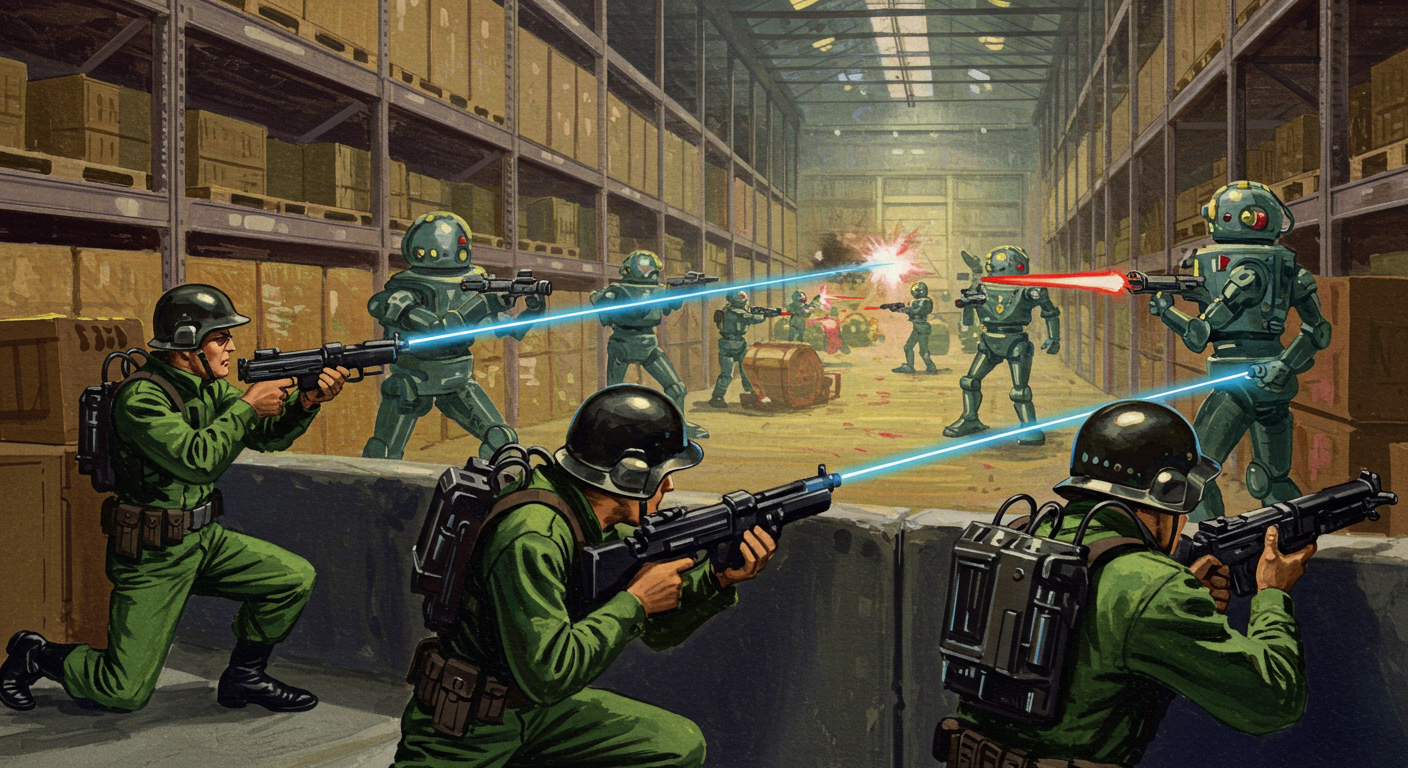
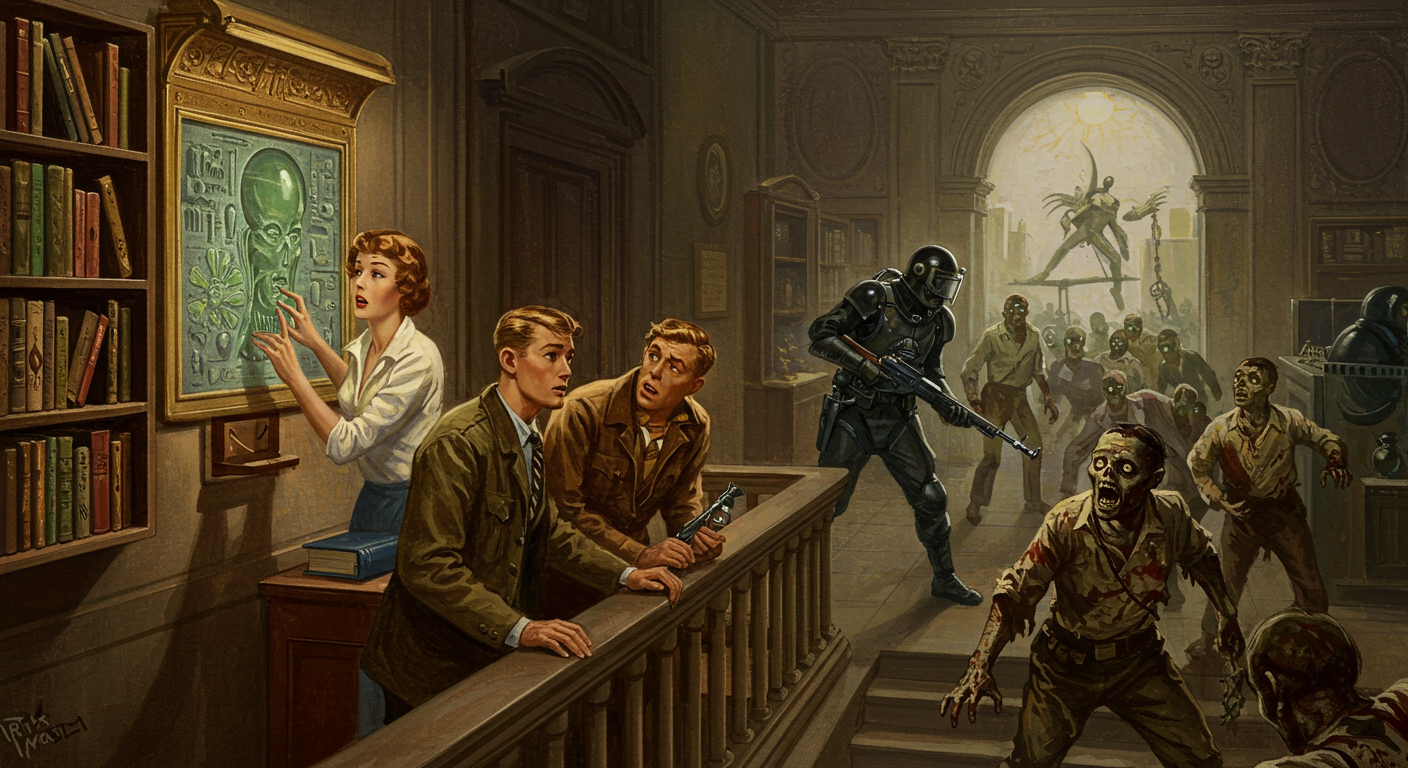
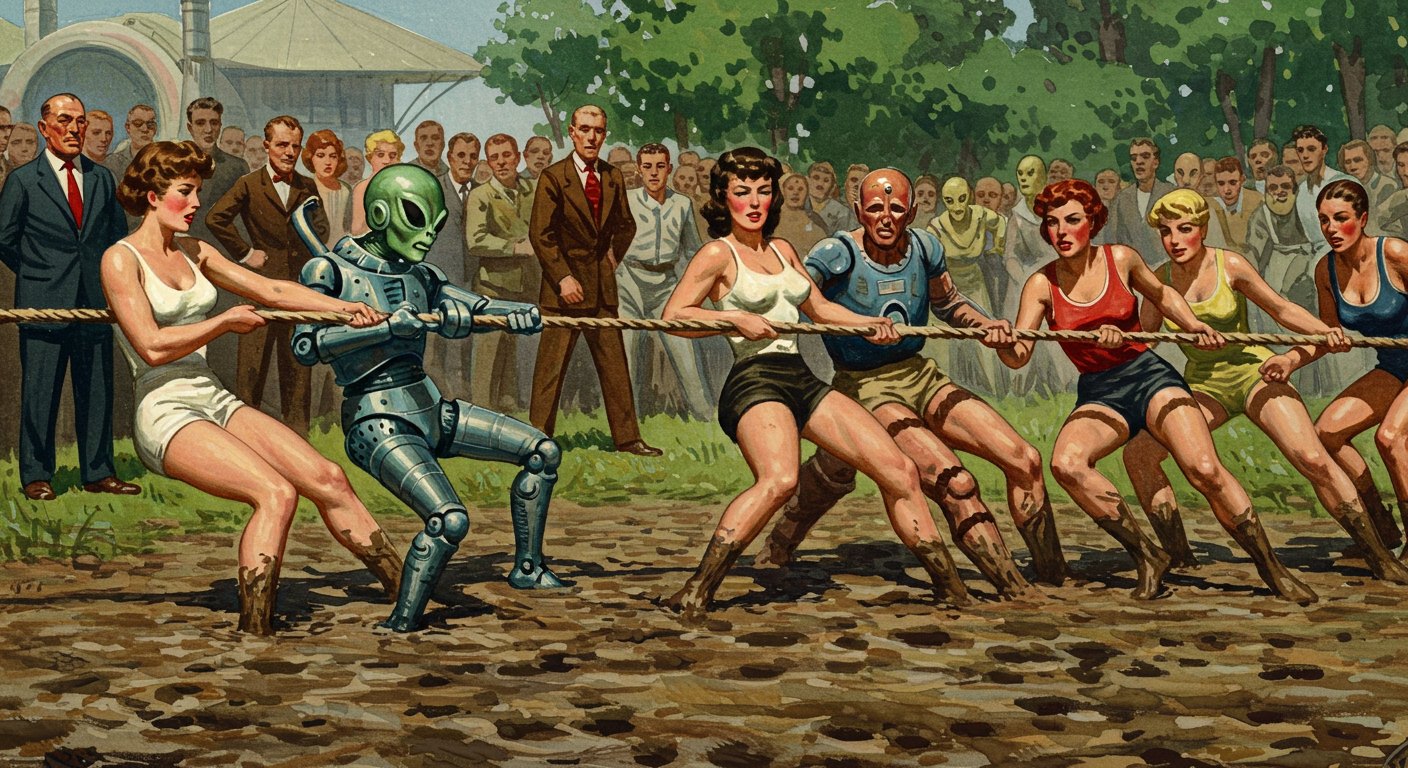
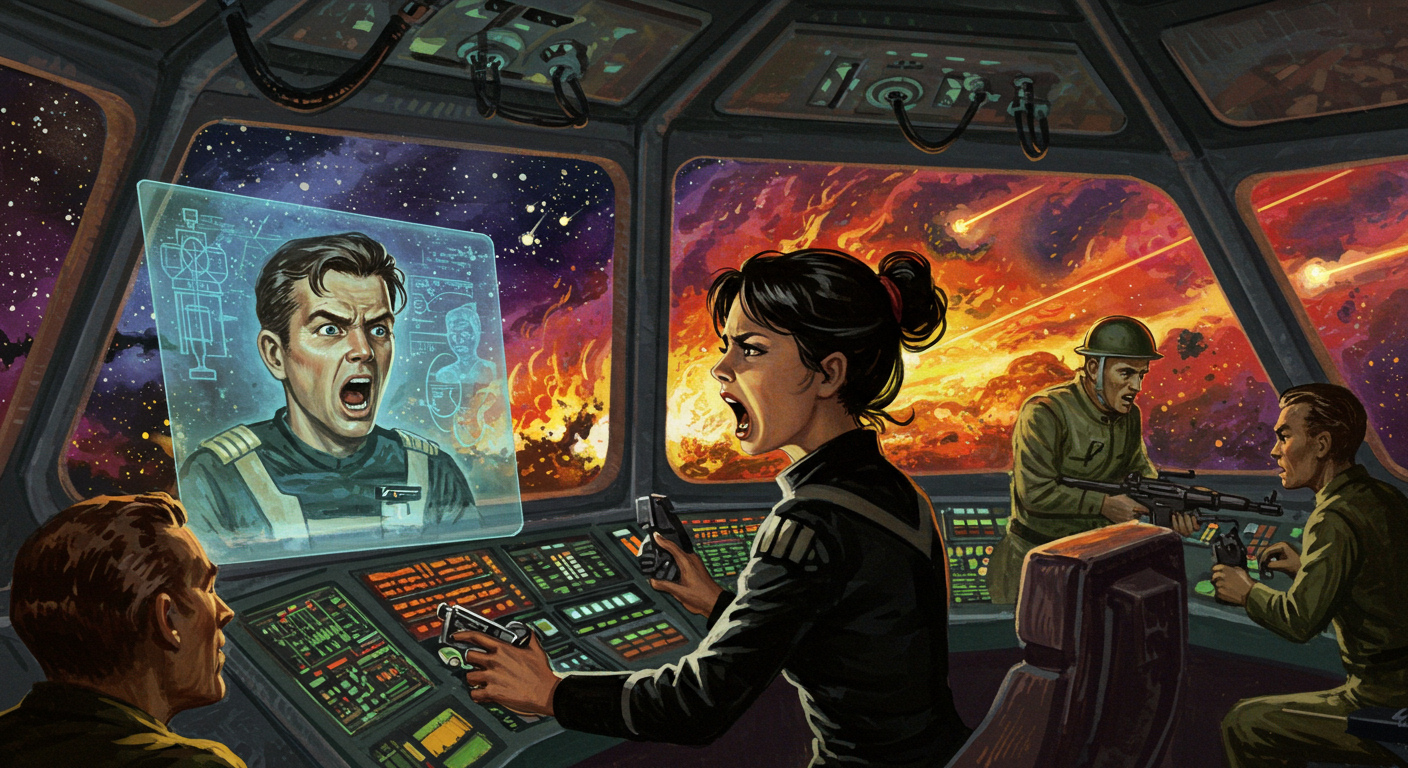
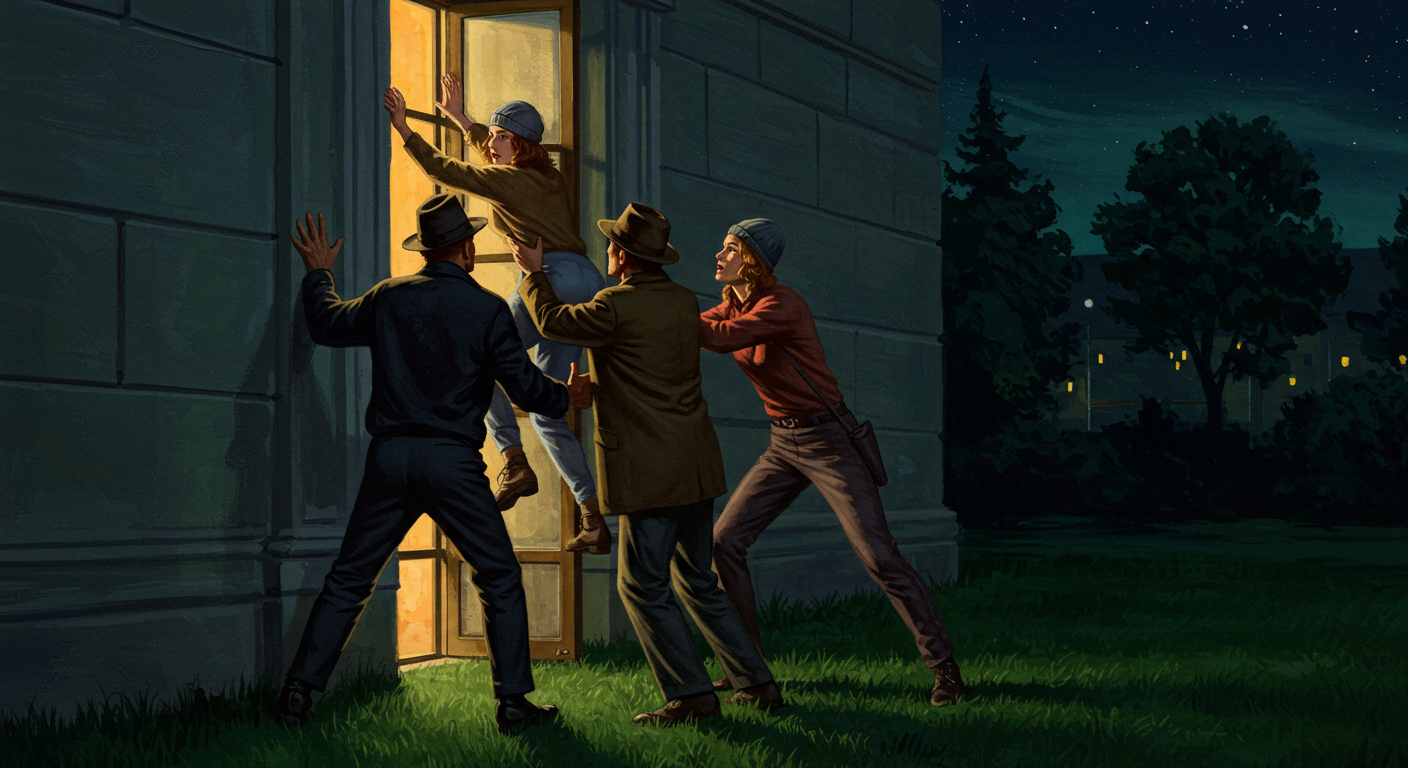

Comments